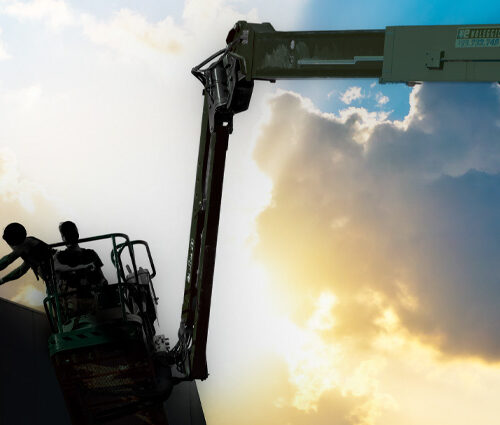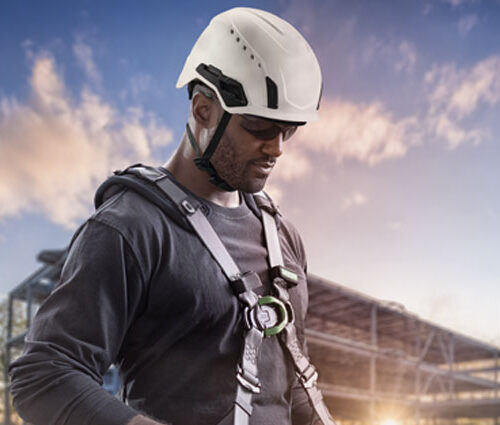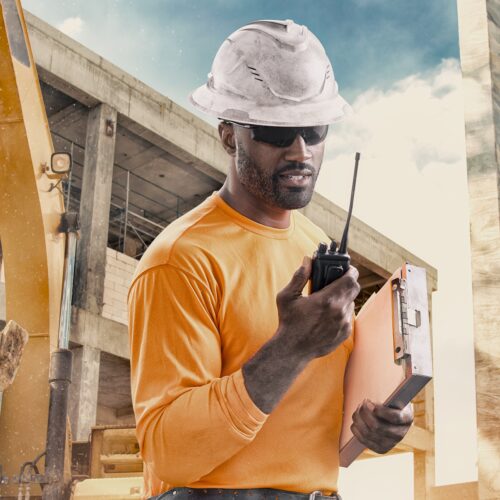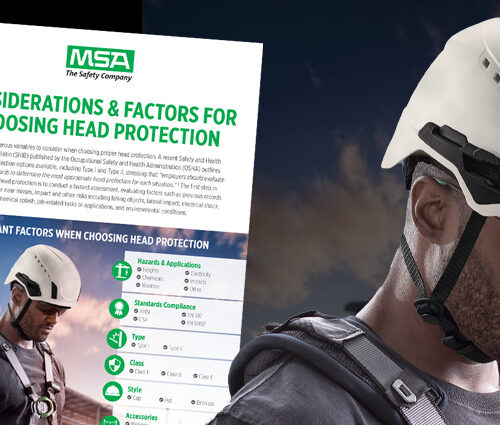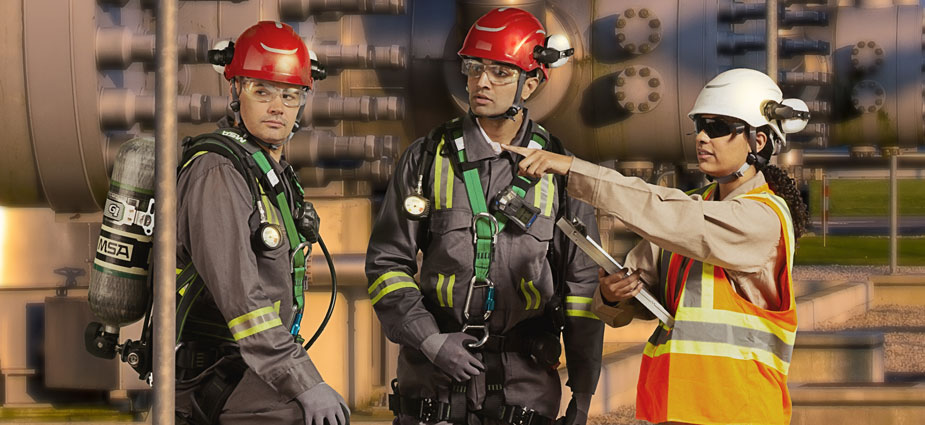
You already understand that wearing a hard hat is essential for protecting your most valuable tool: your brain. The effects of Traumatic Brain Injury or TBI can be devastating, not just for the injured, but for their families as well.
In a previous post, we talked quite extensively about two important parts of choosing the proper headgear with regard to regulatory standards:
- TYPE – Standards referring to impact resistance and direction
- CLASS – Those concerning the electrical rating of a hard hat
We also touched briefly on style. Although not governed by standard or regulation, it’s important. The wearer’s preference may determine this. But there can also be benefits of one style over another in particular scenarios.
Today we’re going to look at some situations where a climbing-style helmet might be the best choice for head protection.
But first… what is a climbing helmet?
Brimless helmets give you a better field of vision on the job
We’re all familiar with hard hats sporting partial or full brims. They give a measure of safety from falling objects by deflecting them.
Brims can also shield our eyes from direct sunlight. They can be used in any situation, provided their Type and Class designations match the task at hand.
However, there are scenarios where brimless headgear — climbing helmets — provide increased visibility of your surroundings, and still maintain hazard protection.
For example, have a look at the Nexus Heightmaster and Linesman climbing helmets. While similar, they do have some significant differences in helmet construction and design, and they’re used for different applications.
Because climbing helmets are virtually brimless, you have a wider field of vision, particularly when looking up. This makes them extremely desirable for industrial tasks that require a lot of climbing – ladders, power and telecom poles, etc.
Of course, up isn’t the only direction you might be climbing. A brimless climbing helmet will benefit utility workers as well. Gas, water and sewer pipes, and even electrical lines and cables are installed underground. A brimless helmet might be more useful than a brimmed hard hat when descending into a manhole or working within a confined space.
In fact, any task that requires a greater field of vision or could use a low profile helmet to reduce snag hazards would be a great time to go brimless. Rescue workers may also benefit from the increased mobility and vision of a climbing helmet.
To vent or not to vent… that’s a good question!
Obviously, vents on a climbing helmet reduce heat stress. But, just like its brimmed hard hat counterpart, certain restrictions apply. To comply with ANSI Z89.1-2014, a helmet or hard hat cannot be vented when used in electrical work. The same is true in Canada, following the CSA Z94.1-2015 standard.
Vents could allow an energized conductor or cable to come in contact with the worker’s scalp. If using a climbing helmet for work around energized components, make sure your headgear is NOT vented.
For general construction — governed by the same ANSI and CSA standards — a vented helmet or hard hat is permissible as long as no live electrical cables, wires or other sources will be encountered.
The Nexus Linesman series can be purchased with or without vents. Make sure to choose the correct one for your application.
All Heightmaster helmets are vented. Classified by both ANSI Z89.1-2014 and the European mountaineering standard, EN12492, Heightmaster helmets are rated as Type 1 Class C headgear for ANSI certifications.
Other necessities and accessories
When wearing a climbing helmet, use a chinstrap to keep it on your head at all times.
MSA helmets offer a 4-point chinstrap to provide a more secure fit. A pivoting nape system means that you’ll have a greater range of motion… and comfort.
The chinstraps for the Linesman helmets are slightly different than for the Heightmaster. The Heightmaster chinstraps must conform to EN12492 while the linesman conforms to EN397. These standards specify the force under which the strap must release the worker from the helmet should it be caught on or lodged in a structure, etc.
Of course, ear and eye protection are required in many industries. Accessories for climbing helmets include attachable ear muffs, full-face visors, and eye shields.
While some forms of ear and eye protection can be separately worn, attaching them to the helmet keeps them readily available and are integral for worker safety.
One caveat: shields and earmuffs must be designed specifically for the helmet or hard hat on which they’re being used.
If your industrial tasks include climbing (at heights or into the ground), consider a climbing helmet for personal head protection.
Your brain will thank you.
MSA climbing helmets. Keeping you safe, because… We know what’s at stake.


